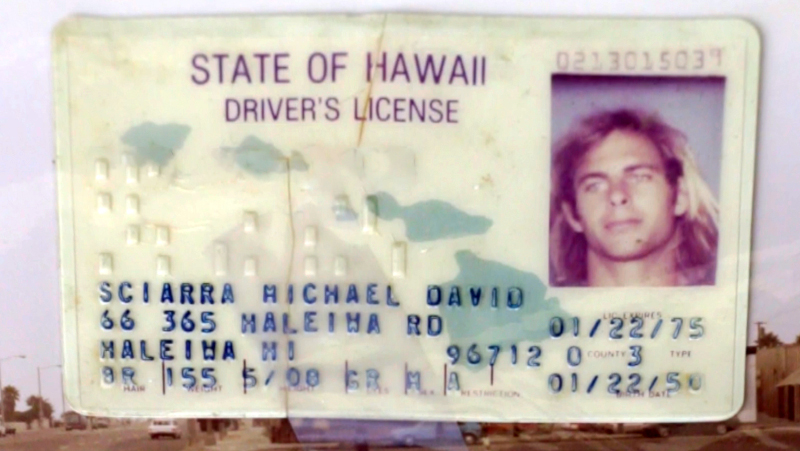Surfing is the only sport where the greatest innovations have been made by the love from it’s enthusiasts. These innovations have shaped surfing into what it is today. Board shapers are constantly making improvements to surfboards for more performance or stability. Whether it’s the smallest tweaks to one of the dimensions, or a new combination of materials to create the board, surfing is a sport where the tools you need to play the game are constantly evolving.
It was not all that long ago when everybody surfed on a longboard; the only reason for that was because that was the only surfboard available. A longboard is a wide, long surfboard that is about 10 feet long constructed with a single fin. Enter a teenage Mike Sciarra living in Wildwood, New Jersey enjoying the surf with his longboard, faced with a choice of masonry work with his dad or attending college. Young Mike chooses education. His two possibilities are Ohio (no surfing) or Florida (surfing hot spot). Mike takes off for Cocoa Beach to attend University and enrolls in Oceanographer classes at Florida Tech in 1967. A lot of big names are surfing around here and a few go to Florida Tech including Mike Tabeling. Mike surfed often with Tabeling and they remained friends until his death last year. Oceanside O’Hare, and Surfboards Hawaii had shops in Cocoa Beach and sponsored some heavy hitters like Gary Propper, Claude Codgins, Jeff Crawford and Greg Loehr. In between classes, you could find Mike surfing the Canaveral Jetties, Indialantic or Shark Pit.
Gary Propper, the top paid pro of 1966, from Cocoa Beach. Image courtesy of East Coast Surfing Hall Of Fame
A surfing revolution had been brewing for a couple years. In 1964, two Australians George Greenough and Bob McTavish, a crazy knee boarder from Santa Barbara, California and an amateur shaper from Australia start experimenting with surfboard shapes. Maybe they realized the surfing industry was a little stagnant. Maybe they were crazy and thought it would be fun to try something new. Greenough and McTavish experimented for a couple years and came up with “Sam”. Armed with and longboard as their only template available, they make a thinner, shorter, sleeker surfboard with different bottom configurations named Sam. In 1966, Robert “Nat” Young takes Sam to the World Surfing Contest in San Diego and crushes it. The surfing world is stunned, but Sam is not quite ready for prime-time yet. Of course we know today, surfboards shapes perform differently in different surf conditions. The North Shore of Hawaii is the take it, make it, break it, remake it grounds for surfboard designs where Sam was unpredictable. The missing puzzle piece was Dick Brewer who has been shaping boards in Oahu since 1960. Brewer has a secret surfing weapon: a short tear drop pin tail called the mini-gun he has been perfecting.
Nat Young and "Sam" in 1966.
In 1967, a wave that started in California and Hawaii breaks straight towards the East Coast and shakes the foundation of the surfing world. The longboarding dynasty was over and suddenly the pintail, concave, pointy nosed shortboards were the choice of the new generation.
Back in Florida, Mike has a bit of a revelation and looks for a place where he can transfer his college credits and tailor a degree that suits his needs better. Where else better for a stoked, young surfer in an industry in the midst of a major overhaul than Oahu? Mike transfers to the University of Hawaii in 1968 to study business and economics and act a scientist at the heart of surfing’s experimental laboratory on the North Shore.
Among the legendary and, dare I say godlike, surfers and shapers, we encounter Dick Brewer, Owl Chapman, Reno Abellira, Barry Kanaiaupuni, and Gerry Lopez, along with a whole host of no name surf worshippers who make boards to ride them in back yards all over Hawaii. Mike Sciarra and a bunch of buddies who all happened to take the long, strange trip from Florida to Hawaii start shaping shortboards at the start of the shortboard revolution among the prolific, prodigious, and prestigious.

After graduation and business degree in hand, Mike brought his board shaping skills back to his hometown of Wildwood, New Jersey and started Kona. Since Mike’s Hawaii days, a lot of surfboard shapes have been invented and perfected, but a lot of those friendships remain the same. Stay tuned for Part Two coming soon.




